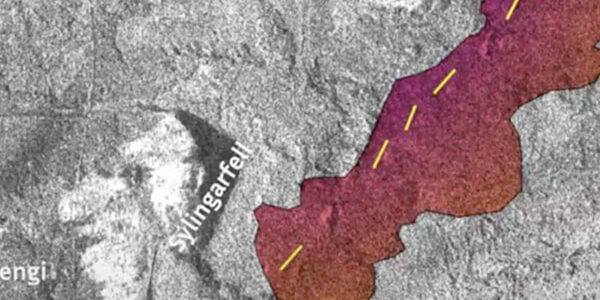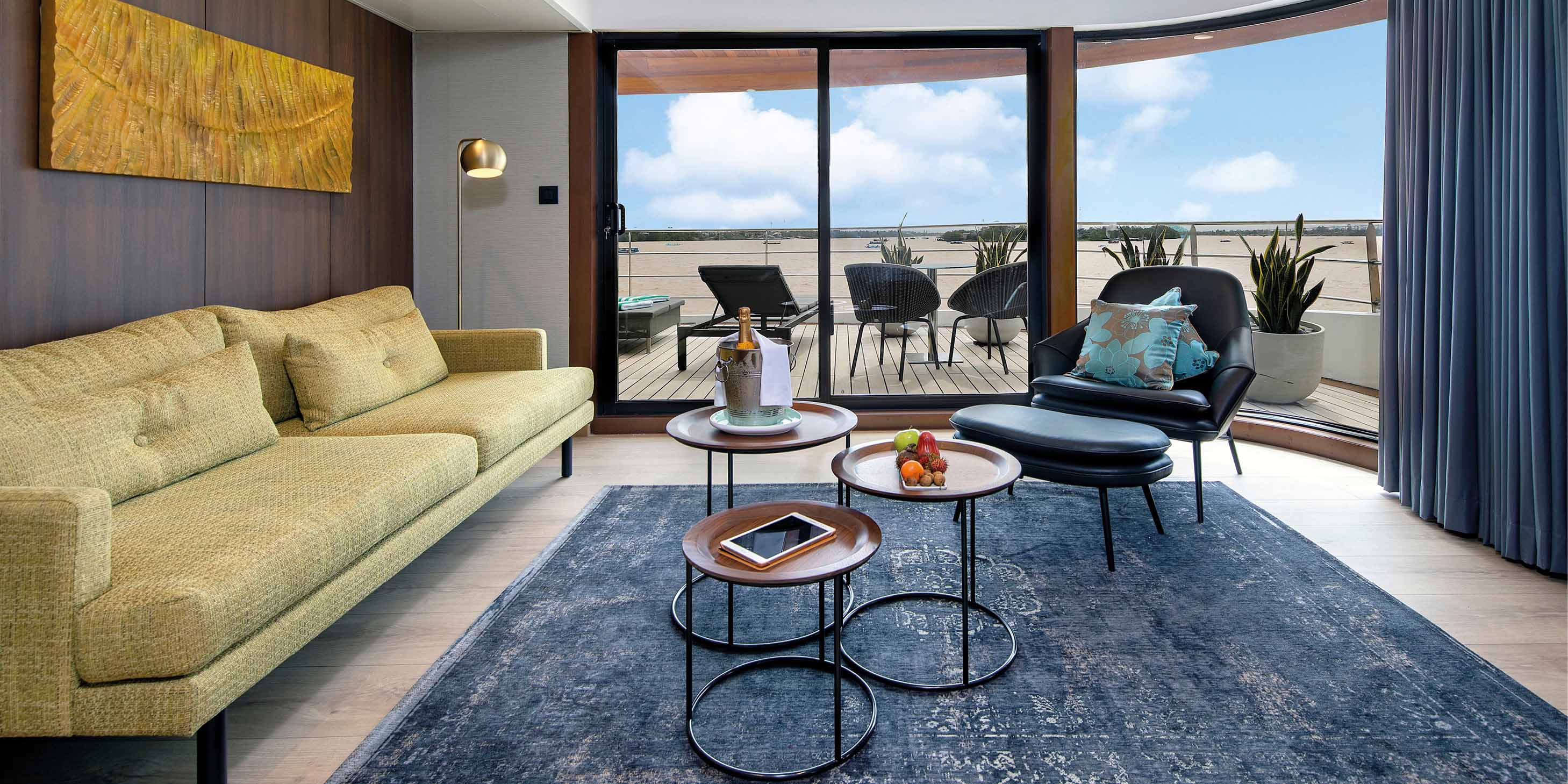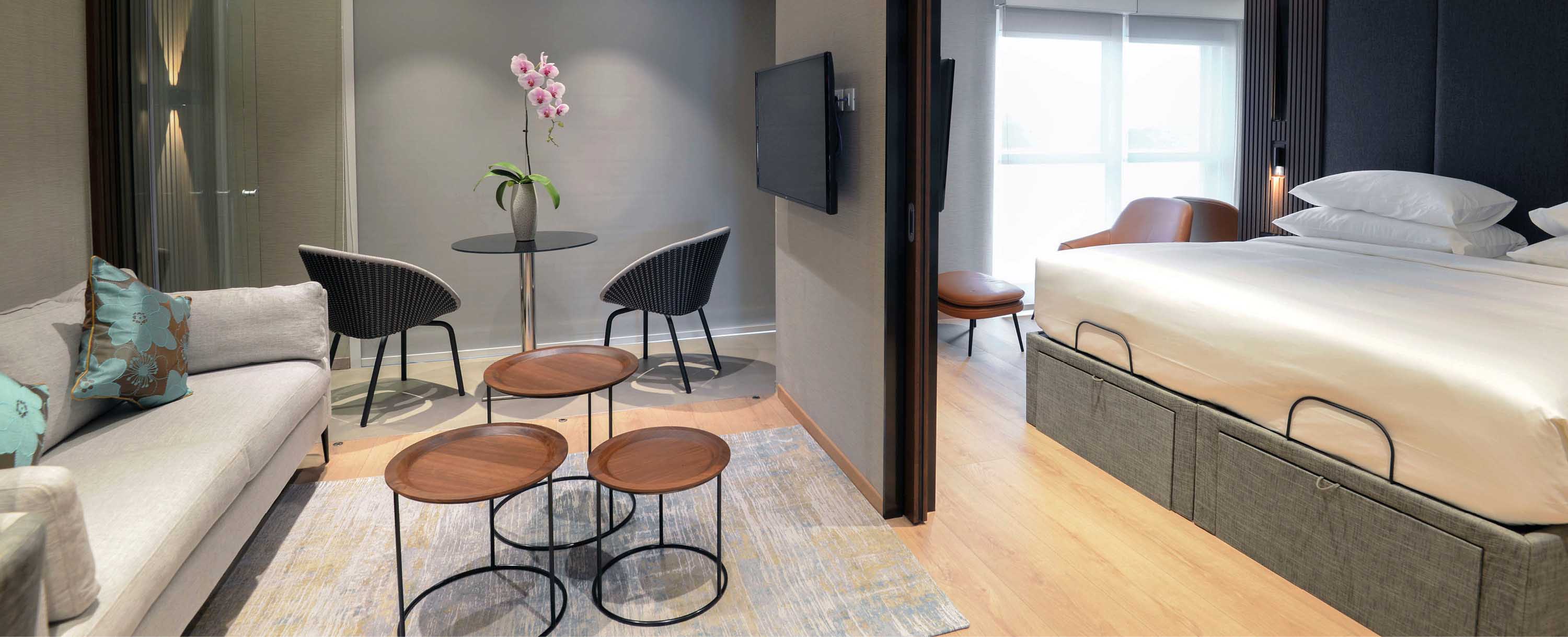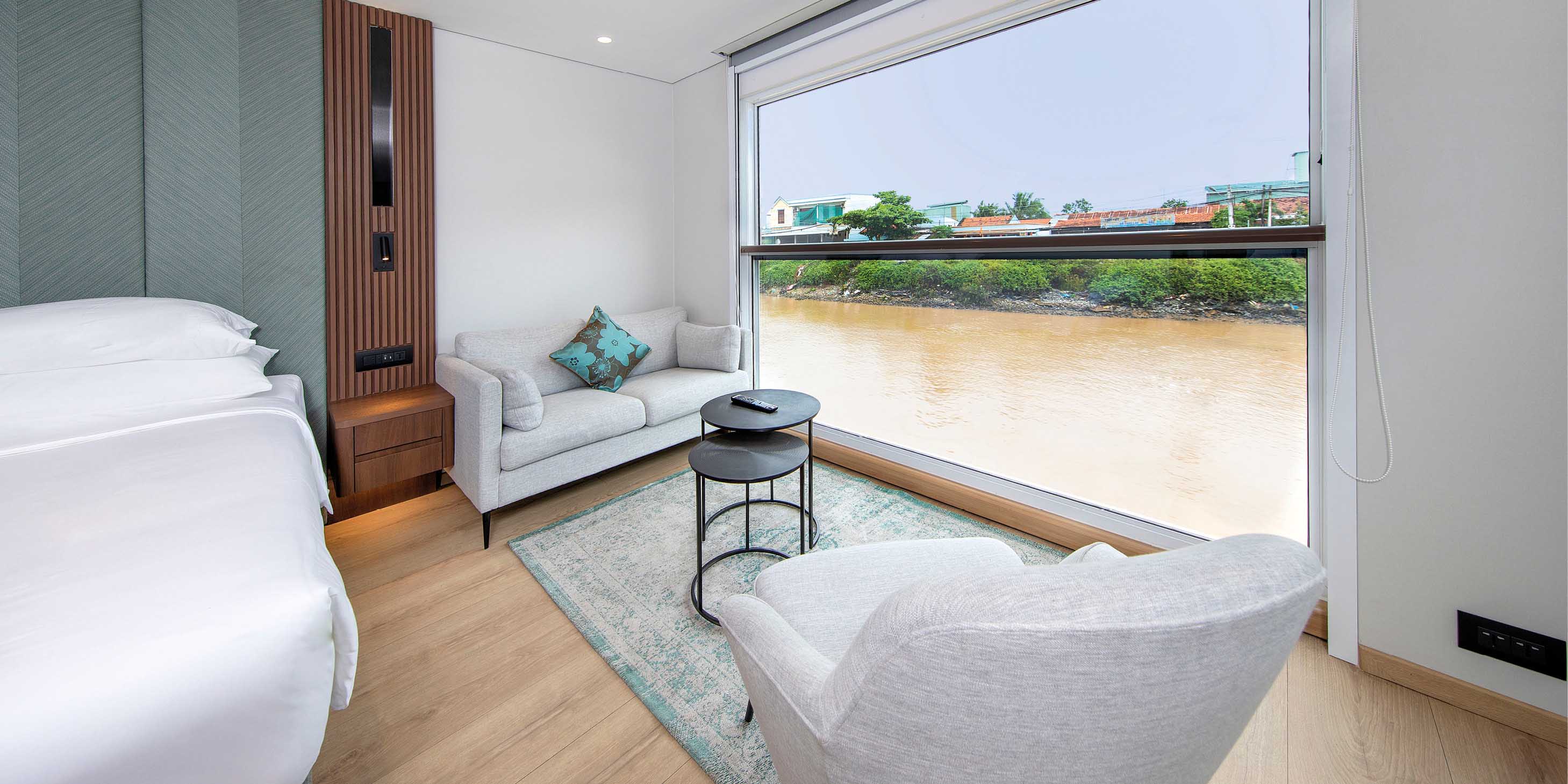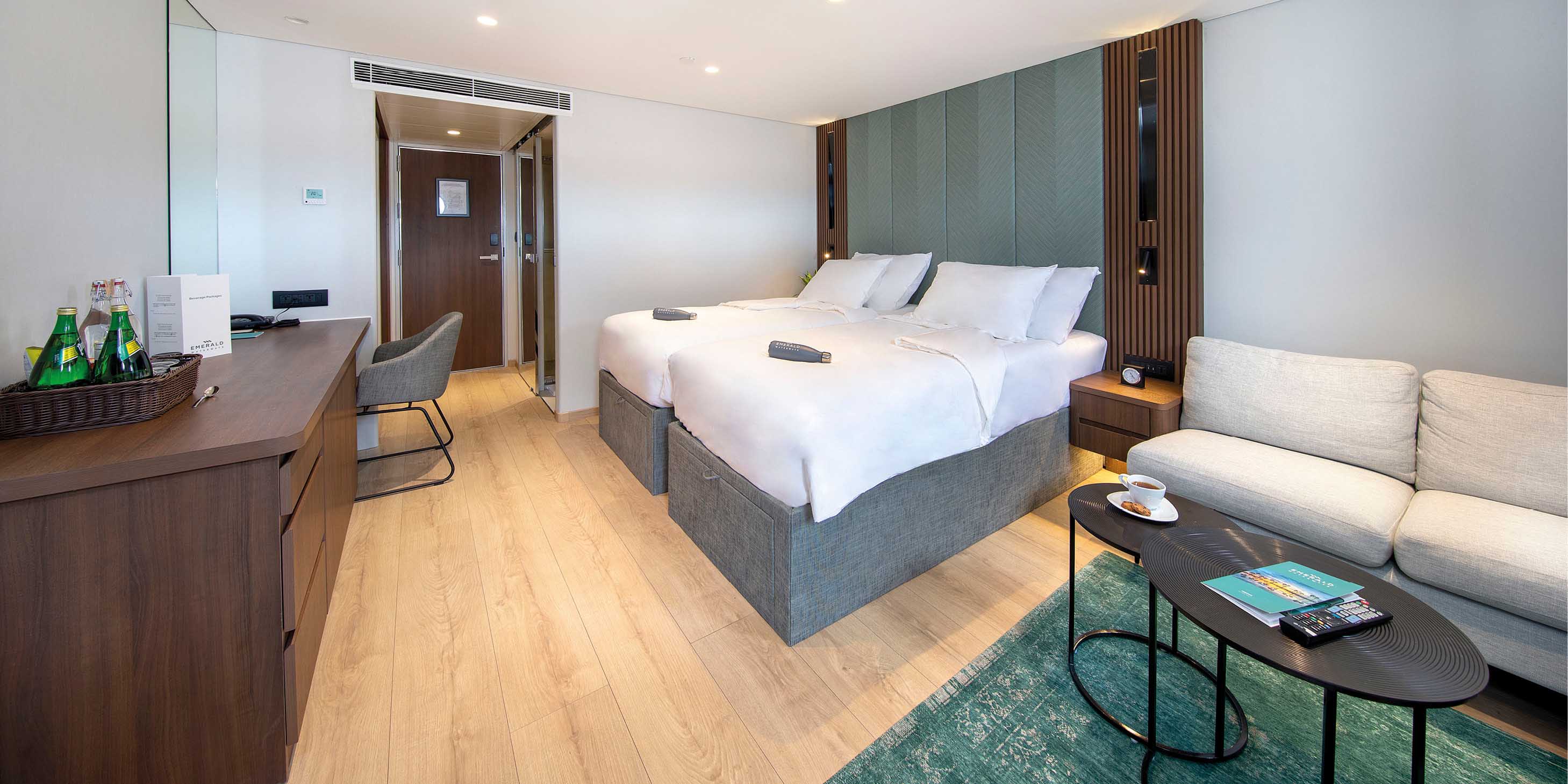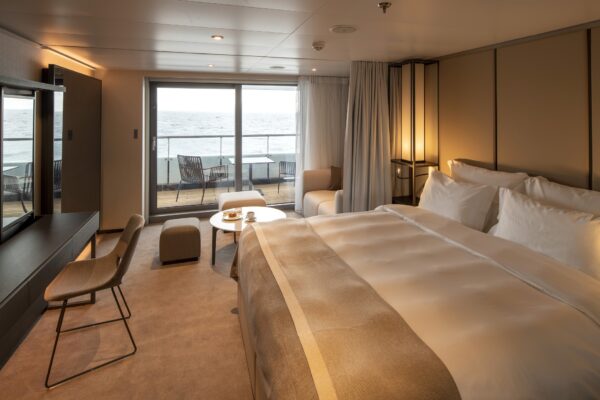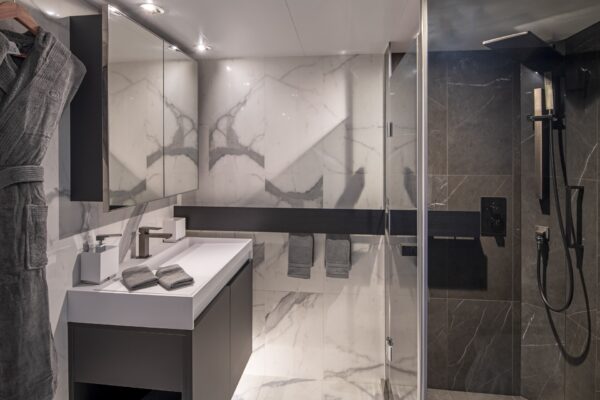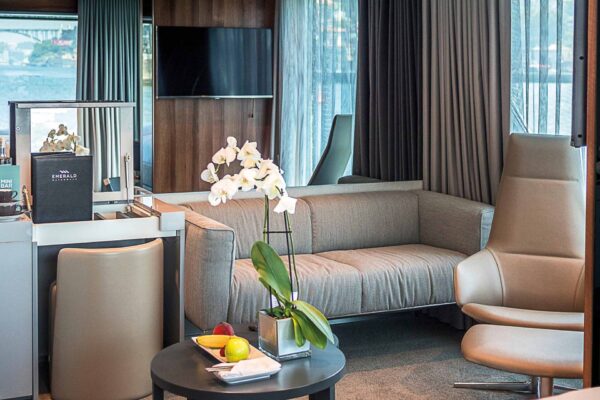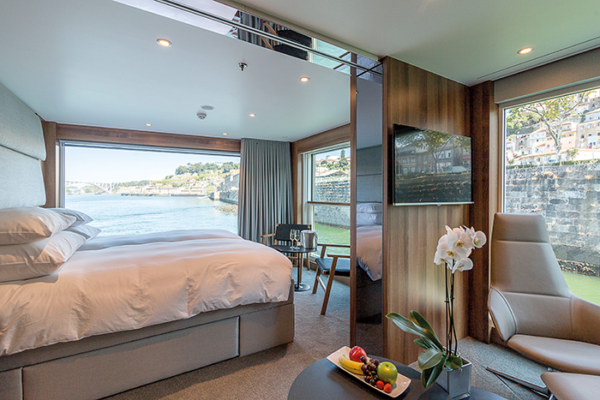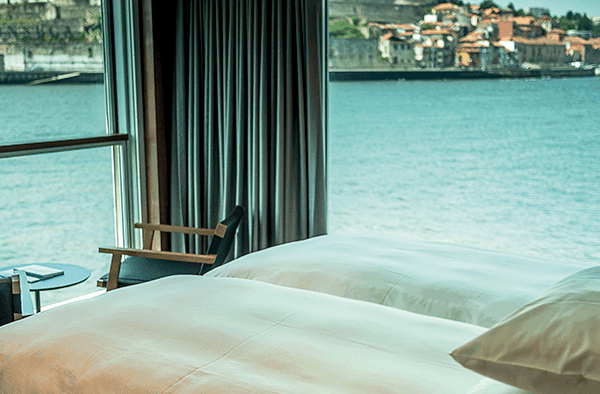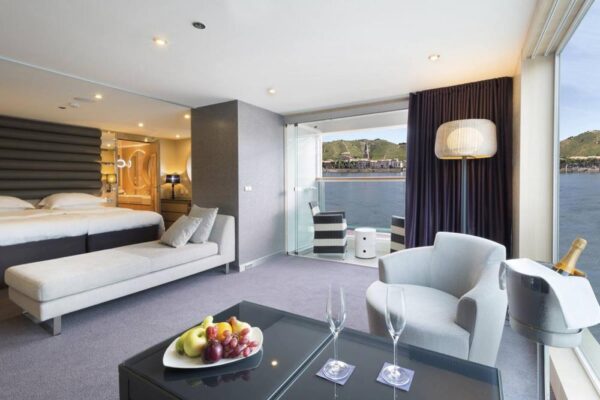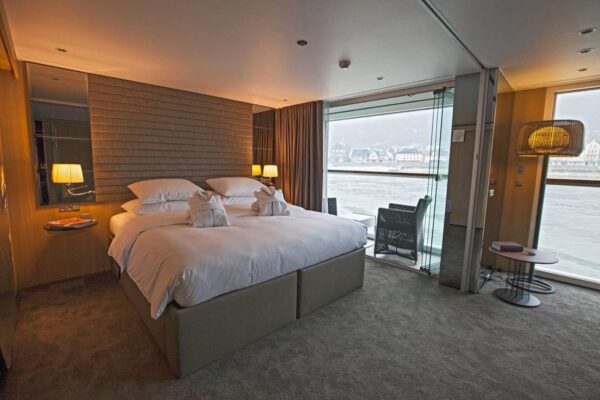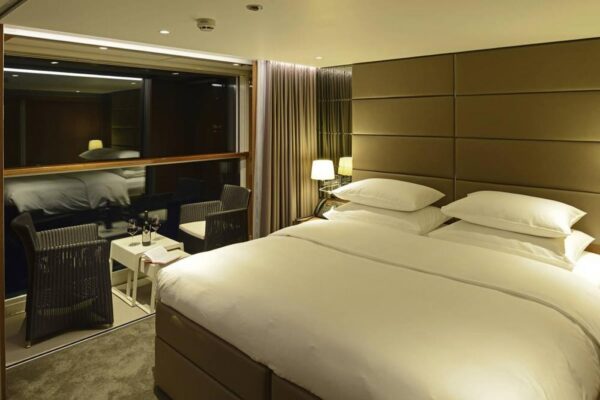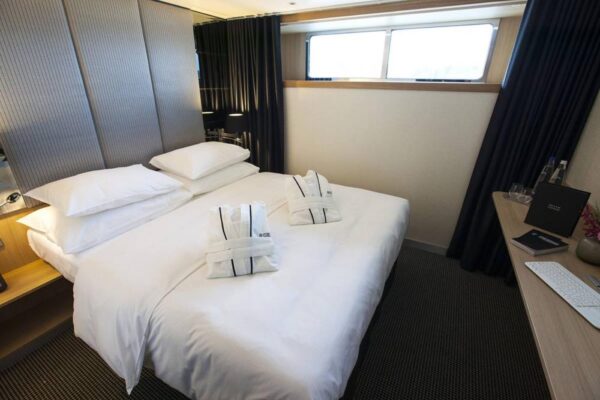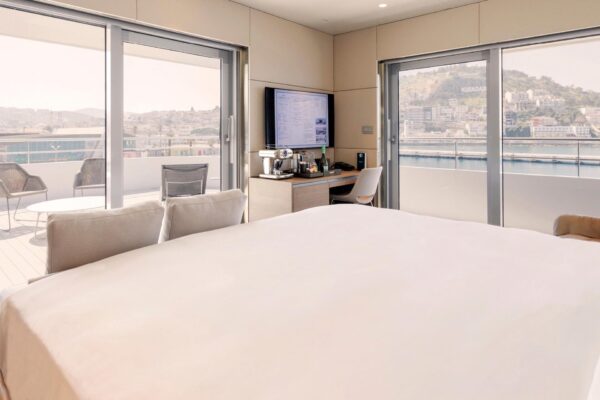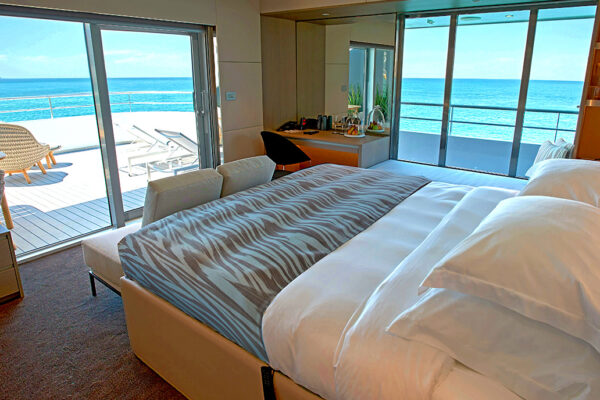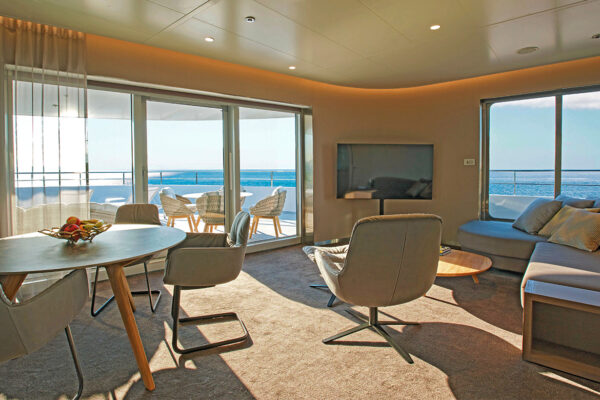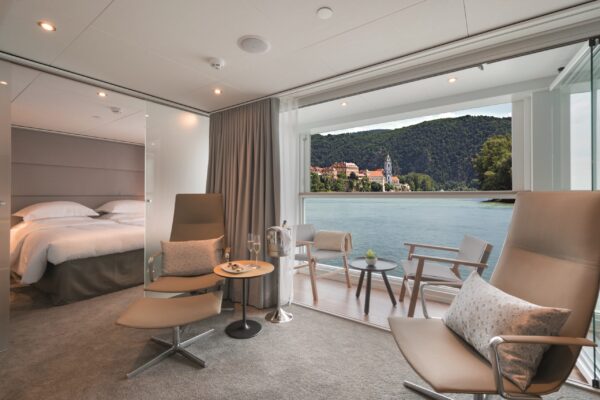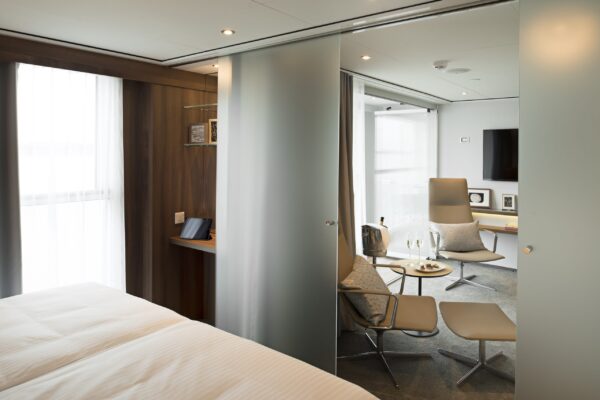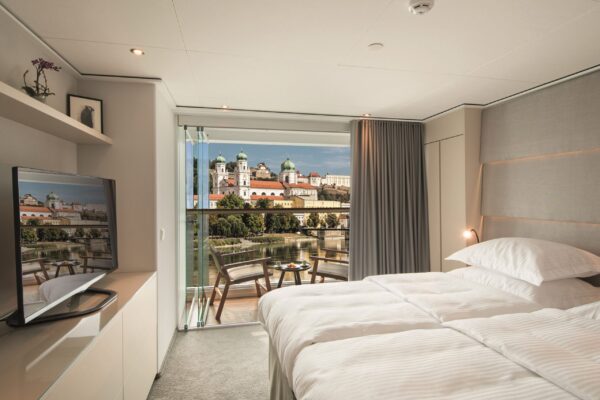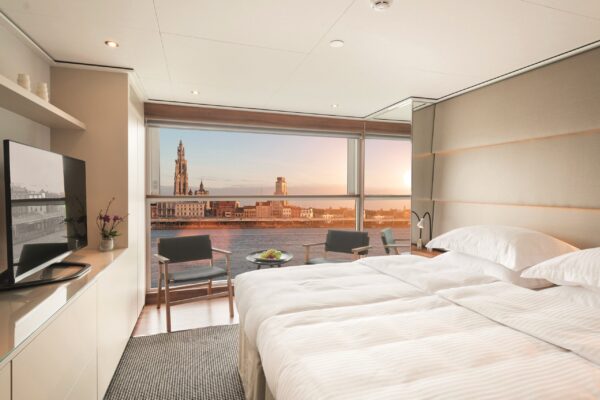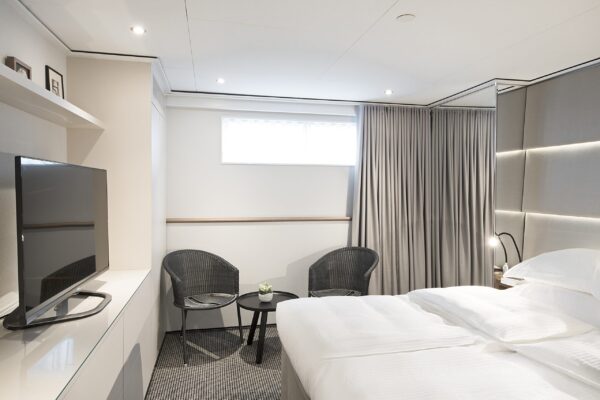Only two Owner’s One-Bedroom Suites are available on Emerald Harmony, making them our most exclusive suites. Enjoy your own private terrace, complete with a spacious hot tub for ultimate indulgence, as well as an extra roomy lounge and bedroom.
For the last few months, many have been nervously waiting for the eventual eruption of the Reykjanes Volcanic system. For several weeks, there have been multiple iterations of ground uplift and subsidence due to a large magma intrusion beneath the power plant and Blue Lagoon on the Reykjanes Peninsula. The small town of Grendavick was notably damaged from the repeated expansion and contraction of the crust under these waves of seismic contractions.
Reykjanes Volcanic System Erupts
At this time, we can say that (tentatively) the town of Grendavick and the Power Plant/Blue Lagoon have fared about as well as one could hope given the location that the lava chose. Instead of coming up directly under either, the lava branched to an existing fissure from an eruption that occurred 800 years ago. The fissure began as a single fountain and quickly expanded to around 4km in length. The initial volume of the eruption appears to be near 250 cubic meters/second but given that this is an effusive eruption, the volume will likely drop in the coming days. That said, this initial volume far outpaces the previous three eruptions on the Peninsula and has the potential to build a sizeable lava field as a result. Until more is known though, both areas are off limits to the public.
All eyes will now be on the fissure itself to see if it continues to expand. Areas along the fissure have already begun to coalesces into dominant vents, and spatter cones are likely to develop within these locations. Some areas were so directly under the 800 year old fissure that the older cones were directly over the new fissure and have begun growing again. As long as teh fissure doesn’t extend further south and the lava is contained on the flats northwest of the Power Plant, then Grendavick and the Blue Lagoon should be saved from any immediate danger. Of note is the timing that allowed for the incredible civil defense construction crews to finish a protective barrier around the Power Plant within hours of the eruption beginning. When the first lave fountain erupted from the ground, the images were clear enough to see the final moments of the teams closing off the barrier from any potential intrusion.
One can hope that this eruption of the Reykjanes Peninsula volcanic system will settle in as another beautiful tourist eruption, but at this moment it is just way too uncertain for the Icelandic authorities to open the area to onlookers. In the coming days the experts will be able to evaluate the volume of lava and the risks to the public to determine whether it is safe for visitor areas to be established.
At Mayflower, our next Iceland tour isn’t scheduled until March, so there will be plenty of data to determine the safety and visibility of an eruption if it is still active. With any luck, this eruption will be more of a natural wonder than a natural disaster. If still erupting for some time, it will help to infuse the Icelandic economy to offset the economic damage its buildup have caused.


